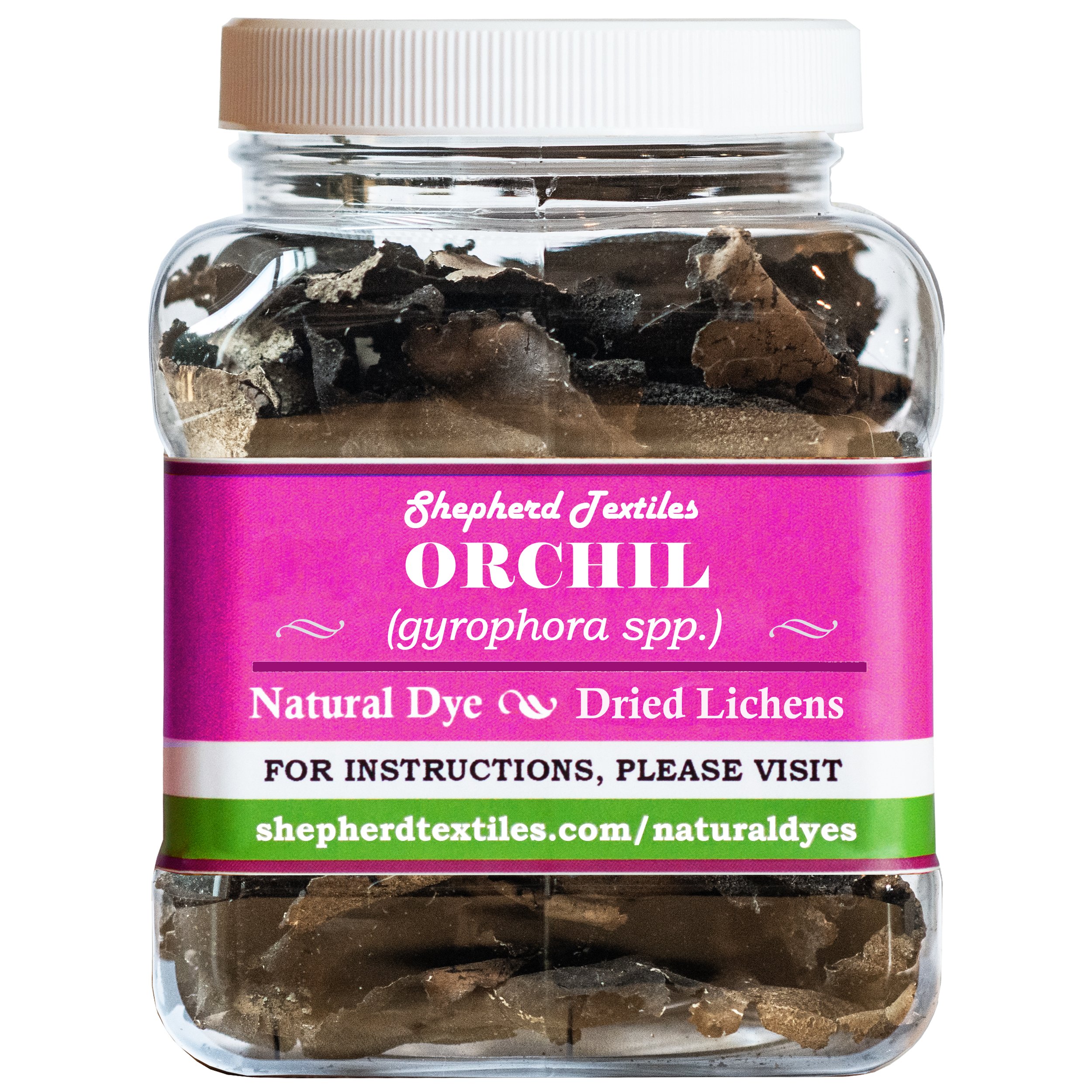Premium Natural Dyes
No synthetics, no azo dyes, and no industrial chemicals. Shepherd Textiles Premium Natural Dyes and Natural Dye Extracts are made only from roots, bark, leaves, flower petals, fruits, or insects. These are the strongest and purest forms of each natural color. Please click on a dye to purchase and to view a dyeing guide that has instructions, color recipes, and safety precautions.
The root that frustrated and fascinated dyers for centuries. Check out our tips for perfect Turkish reds.
Soft pinks, dark purples, or bright cherry reds. With cochineal extract, PH makes all the difference.
Those beautiful spring flowers pack a punch! Dye natural fibers bright shades of lemon and sun yellow.
Famous for intense purples, with the right mordants logwood can also produce dark blues and deep black.
Not the rhubarb you eat with strawberries. The roots of the Himalayan Rhubarb give deep, glowing golden colors and rich brick reds.
The classic natural brown dye, Cutch gives a range of sandy tans and even dark chocolate browns. High in tannins and color-fast.
One of the only natural blue dyes besides indigo comes from the fruit of the Cape Jasmine, a.k.a. the gardenia in your neighbor’s garden.
The bug that makes shellac also makes a red pigment to go with it. Dark merlots, rich burgundies, and all the colors of red wine.
A classic dye from the south of France, Persian Berry gives rich, warm yellows with hint of gold on protein fibers like wool and silk.
The winter treat that’s packed full of tannins. Use chestnut bark for soft, tan shades, or to pre-treat cotton so dyes look darker.
The perfect extract for cooks who always forget to save their onion skins. Onion peel gives pretty mustards and oranges, even without a mordant.
As much of a tannin as a pure dye, myrobalan is used to give fibers a rich, warm, color-fast yellow before overdyeing with other colors.
The strongest, clearest natural tannin. Use it to pre-treat cotton and linen so other dyes attach better, without changing the final color.
A bug that dyes bright red? Our raw cochineal comes from Peru, and gives brilliant scarlets and maroons.
The tree that built the West. Osage Oranges make tough living fences and produce a beautiful yellow from their heartwood.
Not the the neon green powder. Our crushed indigo leaf is so fresh it can be blended with ice to give clear sky blues.
Chock-full of tannins, this South American hardwood gives golden browns on all natural fibers, including cotton.
Careful, black walnut stains everything! We start with whole hulls foraged in Tennessee and grind them in our studio.
For the perfect “millenial pink.” Hand-crafted in small batches, because we can only eat so much guacamole.
Create rich forest greens and dark olive greens, all by using the natural chlorophyll in mulberry leaves.
The strongest source of natural blue, but also one of the most complex to use. Read our guide to help get your indigo vat going.
More than just a resin. The bark of the Gum Arabic Tree is rich in natural tannins, and it gives warm tan colors and khaki browns.
Yummy cherry reds, steel blues, and dark mulberry purples: Sappanwood has a range of gorgeous hues just waiting to be explored.
The classic yellow of Medieval tapestries and Persian rugs. Grown organically in the Languedoc region of southern France.
From the heartwood of a tropical mulberry tree, Old Fustic gives rich, golden yellows that apply easily to all natural fibers.
A classic yellow dye from Korea that contains the same pigment as saffron. Time to try your own saffron-colored silk?
A weird, knobby fruit with a powerful orange pigment. Dyes wool and silk with shades of tangerine and flame.
A dyebath that smells like incense? Red Sandalwood is a rare heartwood from South India that dyes a rich brick red.
One of nature’s most complex roots, alkanet gives lilacs and purples depending on the PH. Pairs well with vodka.
The heartwood of a tropical tree just dripping with purple. Change the mordant to get somber blues and inky blacks.
The most powerful of the natural red dyes, and also the most complex. Read our guide for help getting true crimson.
Famous in the 19th century and all but forgotten since, orchil lichens give bright, luminous shades of fuchsia.

































